[ad_1]
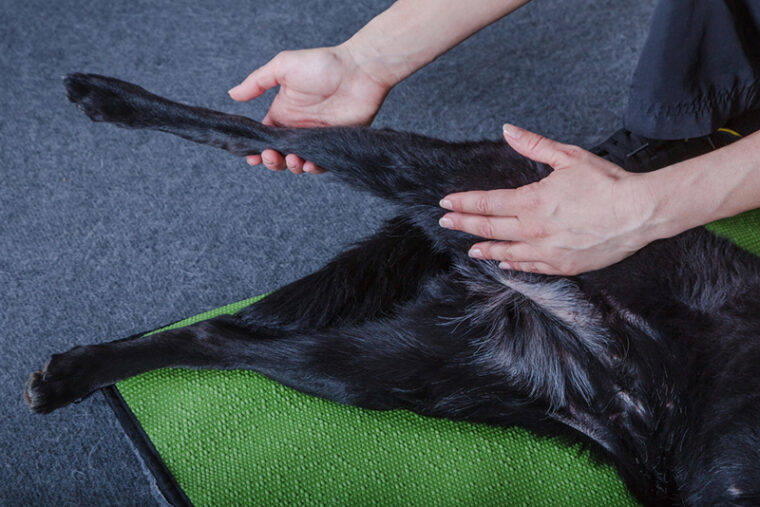
Like us, our canine companions can develop osteoarthritis (commonly just called arthritis) as they age. In fact, arthritis is very common in senior dogs and is estimated to affect around 20% of adult dogs.1 There are several ways you can treat your dog’s arthritis or ease their pain; one of the simplest is to incorporate massage into your dog’s routine.
Massage won’t cure arthritis, of course, but it can go a long way to helping your pup feel better.2 But before you give your pet a massage, you need to know how best to do it so you don’t accidentally increase your dog’s pain rather than decrease it. Make sure to get the green light from your vet or canine physiotherapist before you start massaging your dog. They will also provide you with useful information regarding frequency, body areas to avoid, and massage techniques tailored to your dog’s specific needs.
Below, you’ll find 10 tips and tricks that can help you massage your pet, so they feel at least a little better in no time!

The 10 Tips How to Massage a Dog With Arthritis
1. Maintain a schedule.
Massage isn’t something you want to overdo because that can sometimes make your dog’s arthritis pain worse. But you do want to ensure you’re massaging your pet often enough for it to be beneficial. So, create a schedule for when you’ll massage your pup and stick to it, provided that your dog’s body language is not telling you otherwise.
Doing gentle and short morning and evening sessions is often good. Morning massages can help relieve the stiffness that happens overnight, while evening massages can reduce the pain that occurs from using muscles throughout the day. Though all dogs are different and will have different needs, so experiment with various times to find a schedule that works.
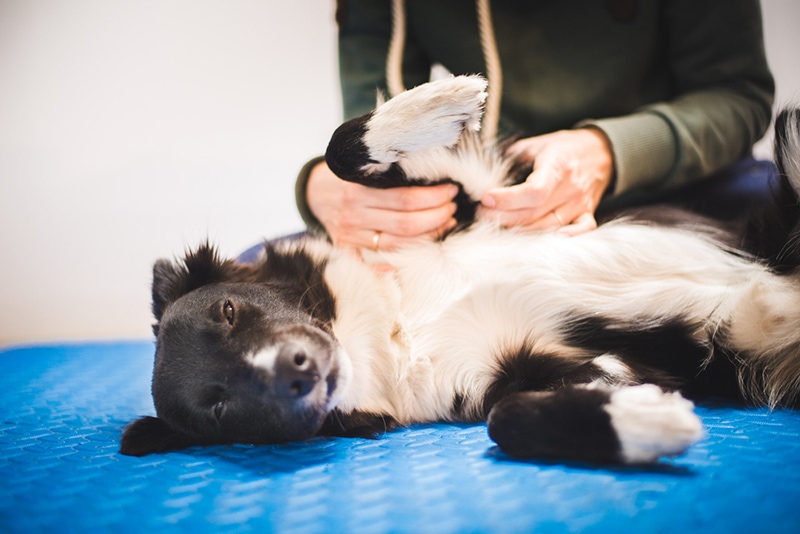
2. Make the massaging area comfortable.
Massages take a few minutes to complete, which means you and your dog will be stuck in one spot for that time. That means you should make the massaging area as comfy as possible for both of you. You might want to have your dog lie on its bed or a soft blanket while you do the massage. And you should be sure that you can reach all sides of your pet from wherever you’re sitting or standing. The comfier you both are, the better!
3. Start the massage in larger muscles groups.
When giving your arthritic dog a massage, you want to begin in the areas where you find larger groups of muscles.
You can start at your dog’s neck, then go from there down the back to the muscles in the legs. Spend a minute or two on each group of muscles. However, don’t massage the joints themselves! This could damage them further.
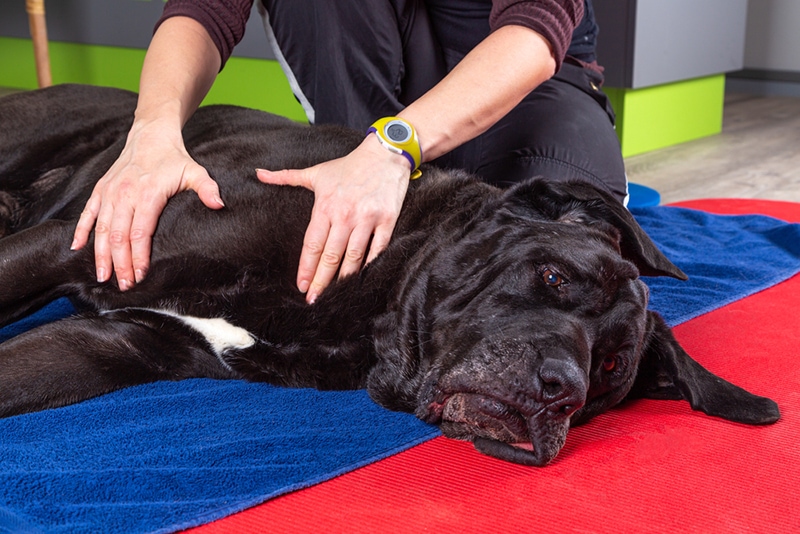
4. Keep an eye on body language.
Your dog can’t tell you if an area you’re massaging is too much or if it’s in pain, so you must keep a close eye on your pet’s body language.3 Your pet might not enjoy a certain area being massaged, or you might be massaging just a touch too hard. The only way you’re going to know to stop what you’re doing is to watch your pet’s reactions. If your pup is flinching or trying to avoid touch, back off.
And keep in mind that just because your dog likes to be massaged a certain way one day, it doesn’t mean they’ll enjoy that indefinitely, which is all the more reason to study its body language.
5. Incorporate gentle stretches.
Don’t only massage your dog; if your dog has no specific injuries, you can incorporate some gentle daily stretches into the routine,4 too! You can help loosen up joints by gently (and we mean very gently) moving your dog’s legs back and forth. Don’t overextend any of the legs, as that can make things worse, and remember to watch your pet’s body language. If your dog seems to dislike the stretches or is in pain, stop immediately!
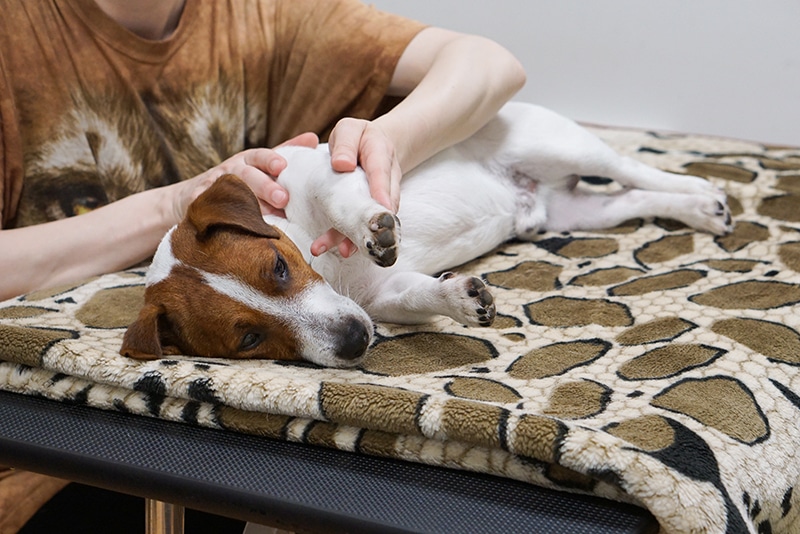
6. Stay positive!
Some canines might not take to massage right away (and some might never enjoy it), but you can help things be more enjoyable by staying positive while massaging your pet. Give your dog lots of praise during a massage session, and toss in a few treats while you’re at it. You might also want to throw in some nice petting while you’re doing the massage. Doing all this will help make massages less stressful and more likely to be enjoyed by your pup.
7. Don’t massage too much in a single area.
It’s been said, but it’s important to reiterate that you shouldn’t massage a single area too much, as this overworks muscles, leading to pain and soreness. You want to move your hand around continuously during a massage and only spend a minute or two on each muscle group. You should also alternate between stroking and kneading to help prevent any soreness and pain.
Smaller groups of muscles will need gentle handling, while larger groups can have more pressure applied to them. And as always, watch your pet’s body language to ensure they are comfortable at all times.
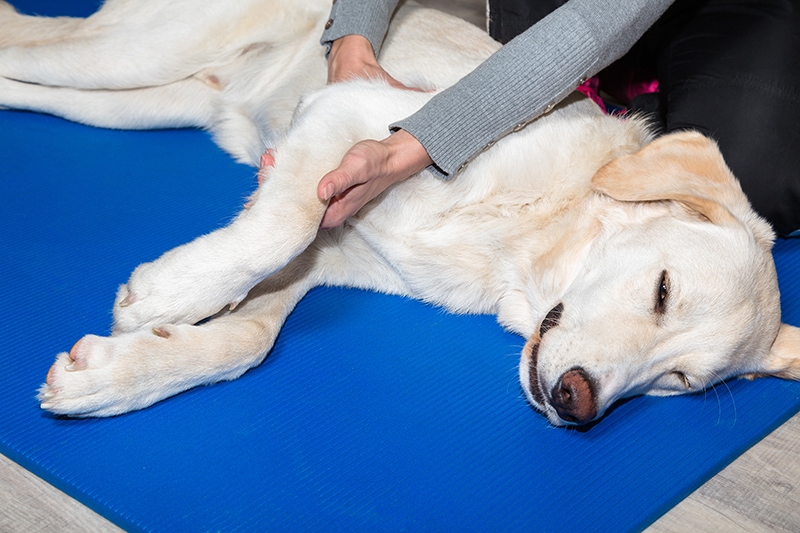
8. Talk to your vet.
Want even more tips for massaging your dog? Then who better to ask but your vet? Your vet will know just where your pup’s pain is and how massage can aid in relieving that pain. So, they can offer you specific-to-your-dog tips on how to best go about giving your pet a massage. Your vet might even be able to demonstrate how to massage if you’re unsure if you’re doing it correctly.
And, of course, if your vet doesn’t think giving your dog massages is wise, it’s best not to do so.
9. No deep tissue massage!
Don’t give your dog a deep tissue massage! While these can be beneficial for some pups, this sort of massage should only be given by a professional. Trying to do this one yourself could cause more harm than good.
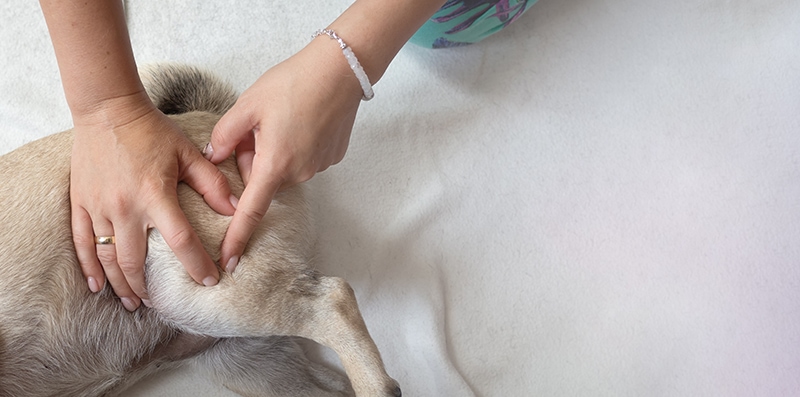
10. Find a massage therapist.
If you and your pet’s vet feel your dog will be aided best by deep tissue massage, or you just aren’t sure how you’re doing with the basic massage, seek a massage therapist for your pet. Ask if your vet has any recommendations. If they don’t have any, you’ll want to find a dog massage therapist with formal training who’s been educated in canine anatomy and massage. And don’t be afraid to ask the massage therapist for references!

Conclusion
Massage therapy can be highly beneficial for dogs with arthritis, and it’s something you can do at home. With these tips and tricks, you should be able to help alleviate your pup’s arthritic pain so they enjoy life more. However, if basic massage doesn’t seem to be helping or your vet recommends deep tissue massage instead, seek out a massage therapist who’s been educated in doing massage for canines.
Featured Image Credit: msgrafixx, Shutterstock

